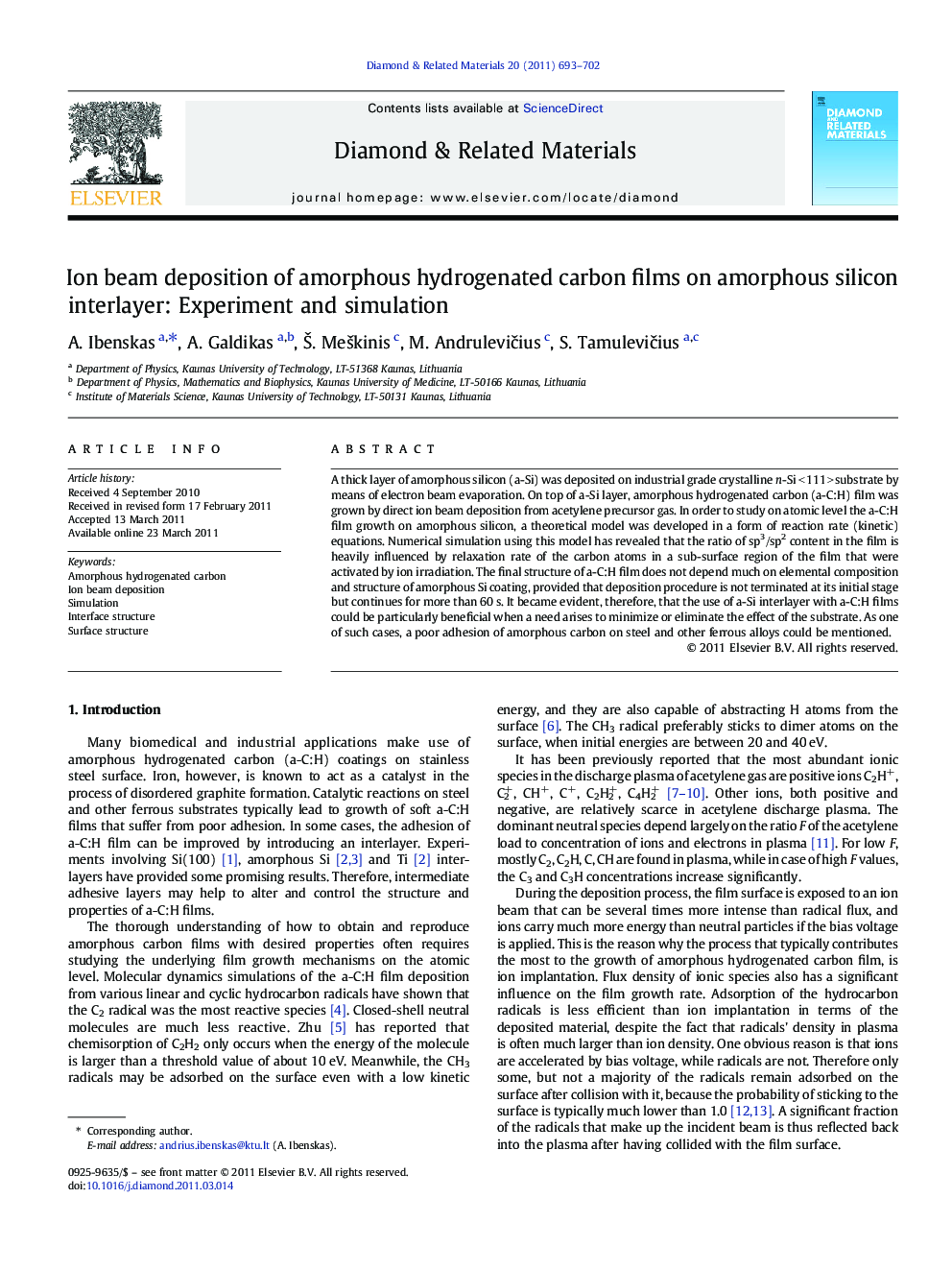| Article ID | Journal | Published Year | Pages | File Type |
|---|---|---|---|---|
| 701924 | Diamond and Related Materials | 2011 | 10 Pages |
A thick layer of amorphous silicon (a-Si) was deposited on industrial grade crystalline n-Si < 111 > substrate by means of electron beam evaporation. On top of a-Si layer, amorphous hydrogenated carbon (a-C:H) film was grown by direct ion beam deposition from acetylene precursor gas. In order to study on atomic level the a-C:H film growth on amorphous silicon, a theoretical model was developed in a form of reaction rate (kinetic) equations. Numerical simulation using this model has revealed that the ratio of sp3/sp2 content in the film is heavily influenced by relaxation rate of the carbon atoms in a sub-surface region of the film that were activated by ion irradiation. The final structure of a-C:H film does not depend much on elemental composition and structure of amorphous Si coating, provided that deposition procedure is not terminated at its initial stage but continues for more than 60 s. It became evident, therefore, that the use of a-Si interlayer with a-C:H films could be particularly beneficial when a need arises to minimize or eliminate the effect of the substrate. As one of such cases, a poor adhesion of amorphous carbon on steel and other ferrous alloys could be mentioned.
Research highlights► Structure and adhesion of a-C:H films is strongly influenced by a-Si layer. ► New kinetic model of a-C:H film growth on amorphous silicon (a-Si) was developed. ► sp3/sp2 ratio depends on relaxation rates from excited to sp2 and sp3 states. ► Final chemical composition of a-C:H is not affected by sp3 content in a-Si layer.
